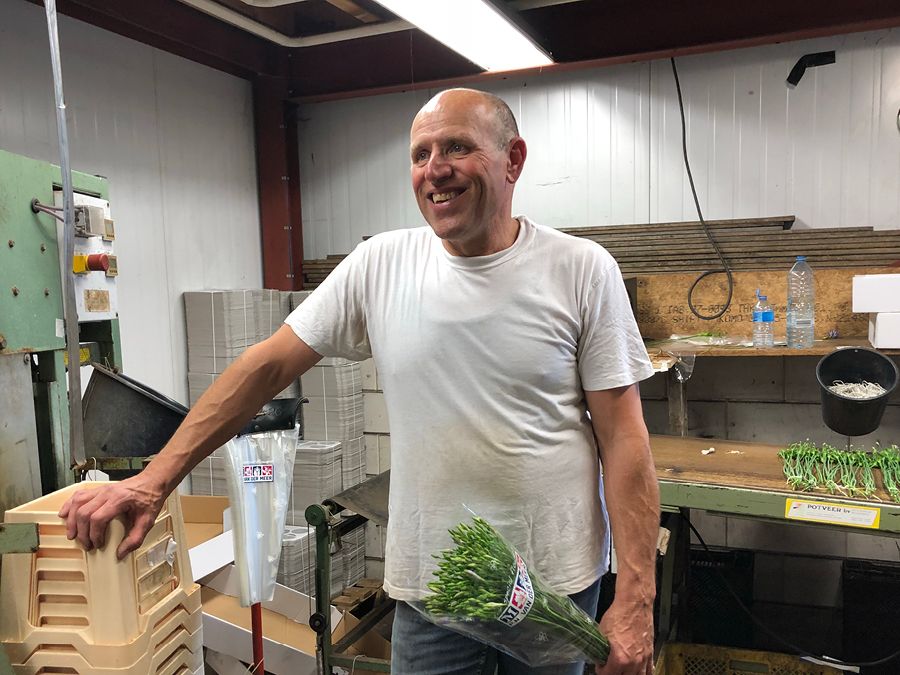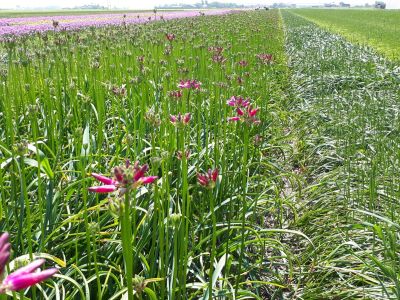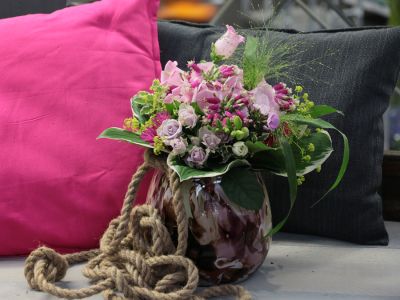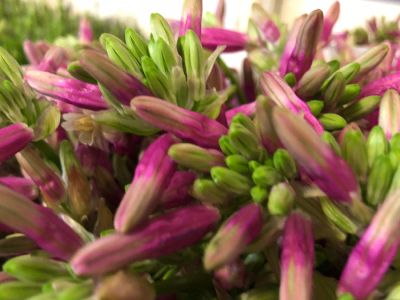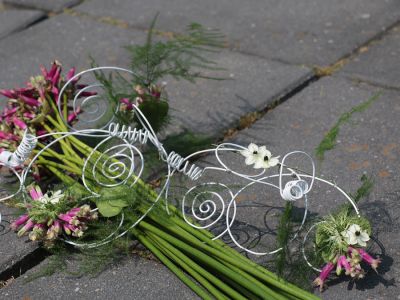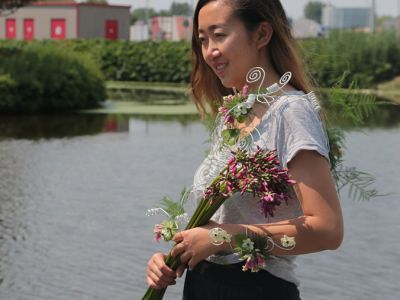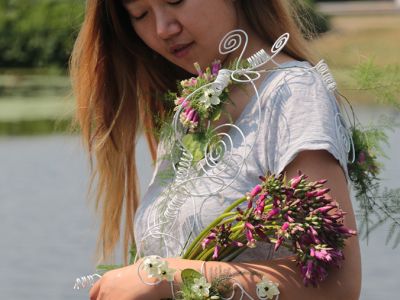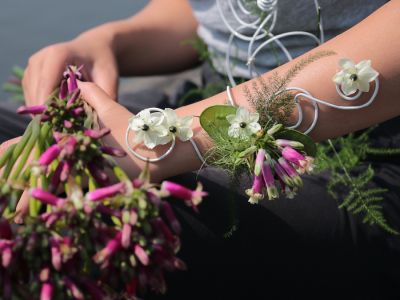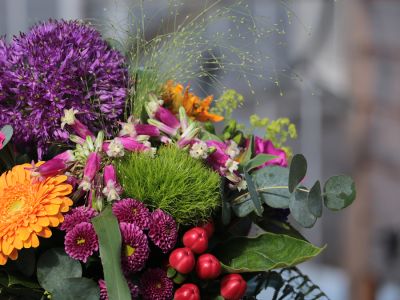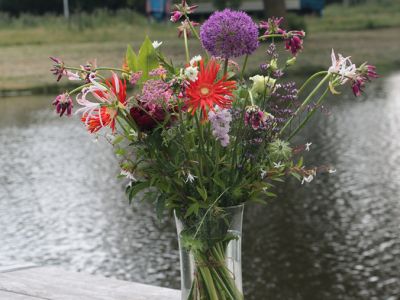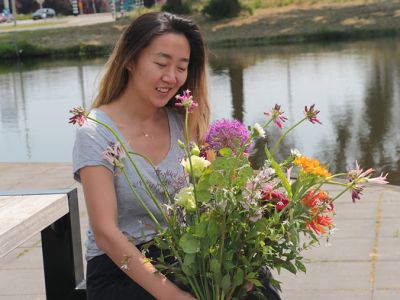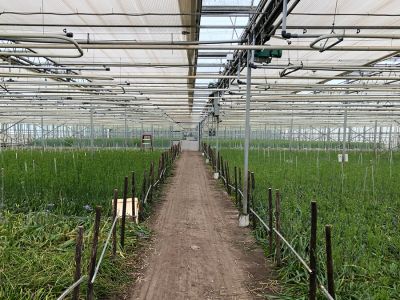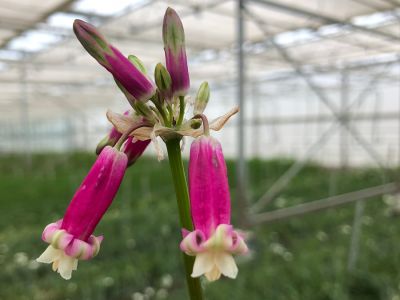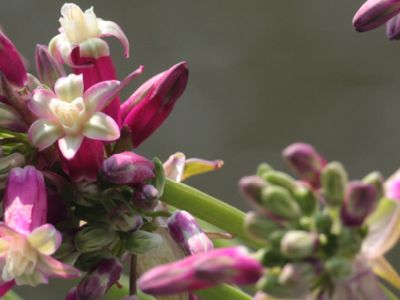Dichelostemma Sultan of Swing

Calendar
The Dichelostemma 'Sultan of Swing' of the outdoor cultivation is now available for 3 weeks.
VBN code: -
Barendsen colour number: Fuchsia
Length: 60 cm
In the spotlights
Hen van der Meer, from nursery P.N. van der Meer BV, grows all kinds of flowers such as Tulips, Ixia's, Brodiaeas, Liliums, Matricaria and Dichelostemmas. They are all bred on a small scale. The nursery has existed for over 64 years. Because the cultivation is constantly changing, it is on ongoing challenge to make the production process run smoothly.
'Firecracker-Flower'
The Dichelostemma (Dichelos "two-wedge" and Stemma "crown") is a real summer product. This sweet, fragile, slightly undervalued flower is a genus from the asparagus family. Most species occur in the West of North America, mainly in California. Because the stems have no leaves and the flowers on the top of the stalk seem to burst like fireworks, this flower is very appropriately called ‘Firecracker- Flower’.
This year Van der Meer produces a new variety, named the 'Sultan of Swing' and we thought it would be a wonderful product for FloraPodium to put in the spotlight and give you the story behind it.
The pink colour of the 'Sultan of Swing' is much more intense than that of the regular Dichelostemma. The Dichelostemma is a real eye-catcher due to its fragile and natural beauty. They are perfect to use in a beautiful field bouquet, or in a small table arrangement or very subtly in bridal work. Because the flower has very sturdy stems, they can also be used in a flower arrangement
If you have a Dichelostemma in a vase with water, it is best to change the water every 2 to 3 days and cut the stems again. This allows the flower to absorb water again. Also use a little cut flower food in the water for an even better vase life.
The Dichelostemma is a bulbous plant that is grown both indoors and outdoors at the nursery of Van der Meer. In the indoor cultivation, where the flower is grown in the greenhouse, it sometimes happens that the flowers seem to wilt a little during the day. This especially occurs when it is hot because then the water evaporates faster from the stalks than the flower can process it. In the evening, when the temperature has dropped and the flower can take in enough water, they recover. These fluctuations have no effect on the quality of the product.
The 'Sultan of Swing' that we present to you on our stage, comes from outdoor cultivation. Outdoors the flowers get more light and there are more nutrients available which makes the plant stronger and the stems firmer and thicker! The disadvantage of this is that the product is only available for about 3 weeks, depending on the weather.
The cultivation
Van der Meer stands for niche products and therefore also grows a varied assortment in smaller quantities. Van der Meer has chosen for the Dichelostemma because it’s a completely different product than, for example, the Brodiaeas he grows. In addition, these flowers also fit well in the cultivation system. A wide range of flowers depends on a refined cultivation system. The Dichelostemma fits in perfectly, because it is a nice and easy cultivation.
The Dichelostemma is a bulbous plant. As with many other bulbous plants, this bulb makes new bulbs during the flowering period. The special bulbs go back to the bulb grower, which can multiply them under the best conditions. Van der Meer does not breed his own species, but has chosen to cooperate with the breeder who has many beautiful varieties for the future!
Choosing the new species is a laborious job. The breeder always has very beautiful species that make Van der Meer very enthusiastic. But it is a real challenge to grow these beautiful products himself. The success of the cultivation largely depends on the amount of light and nutrients. It is difficult to guarantee the same result as with the breeder.
The bulbs of the Dichelostemma are planted in the ground. Here we use nets, so that the bulbs are easier to plant and harvest. If the Dichelostemma is ripe enough and ready to be cut, the flowers will first be put on water for a while. This allows the flowers to suck themselves full of water, making them firmer.
The flowers then go into a machine that collects the stems per ten and cuts them off, after which they are put in a cover per fifty and are ready to be sold.
FloraPodium, 13 June 2018








